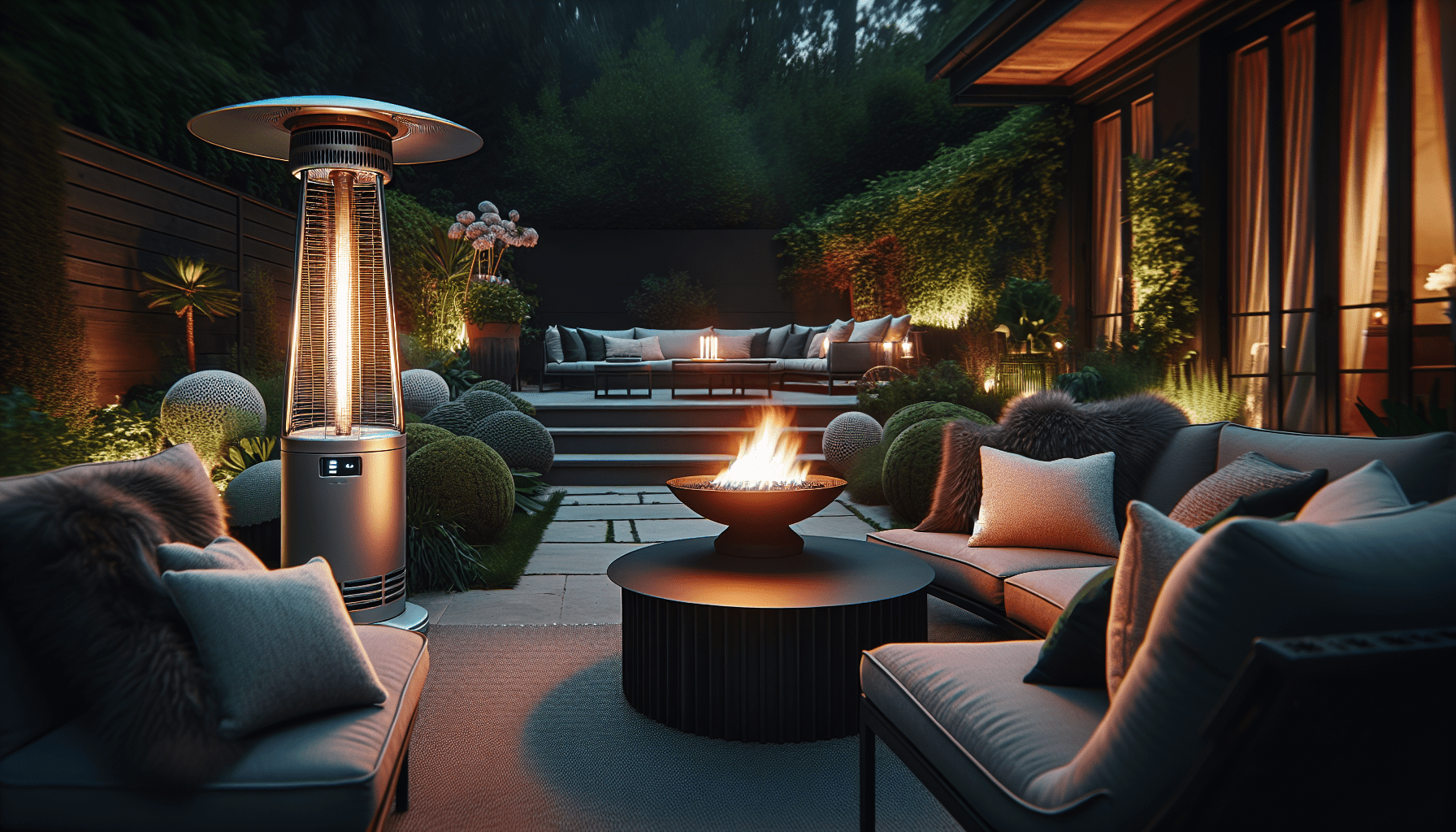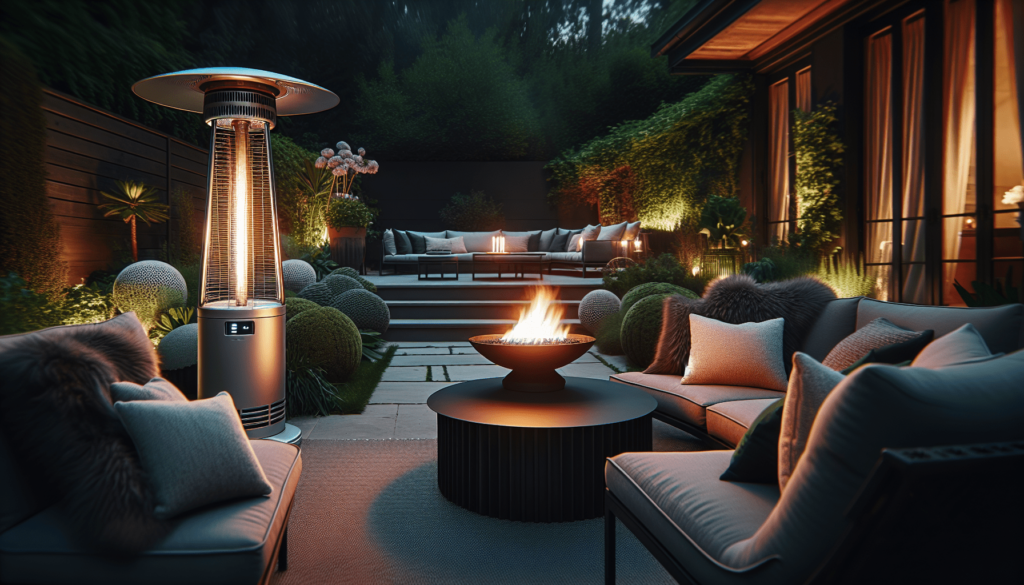
Have you ever found yourself sitting outside on a chilly evening, wishing there was a better way to stay warm? As the popularity of outdoor living spaces continues to grow, finding effective heating solutions has become essential. Turning your patio or backyard into a cozy retreat involves not only picking the right furniture but also ensuring comfort through warmth. That’s where patio heaters and complementary heating solutions come into play. By strategically combining different heat sources, you can enjoy your outdoor sanctuary all year round.
The Basics of Patio Heaters
Patio heaters are a staple for most outdoor enthusiasts looking to extend their time outside. Available in various styles, including freestanding, tabletop, and wall-mounted, these heaters cater to different spaces and preferences. These reliable sources of heat typically use propane, natural gas, or electricity, each having its own benefits and limitations.
Propane Patio Heaters
Propane patio heaters are favored for their portability and ease of use. Brands like Fire Sense and Hiland produce highly efficient models. Propane heaters do not require electrical outlets, making them perfect for areas where power supply is limited. They generally produce a significant amount of heat, ideal for larger spaces. However, they require periodic tank replacements, which could be considered a downside for some users.
Natural Gas Patio Heaters
Natural gas patio heaters are an excellent option for permanent installations. Once connected to a gas line, heaters from brands like Bromic offer a constant and economical source of warmth. However, the initial setup can be costly, and they lack the flexibility to be moved around like their propane counterparts. If your outdoor area is designed for long-term use, natural gas could prove to be a wise investment.
Electric Patio Heaters
For easy maintenance and straightforward operation, electric patio heaters, such as those offered by Westinghouse, are a solid choice. They can be installed almost anywhere with access to power, and their operation is simple—just flick a switch. The downside is their reliance on electricity, which might lead to increased utility costs. Nevertheless, they are perfect for smaller spaces and covered patios where other forms of heating may not be suitable.
Understanding Other Outdoor Heating Solutions
While patio heaters provide direct warmth, other solutions can enhance your outdoor heating strategy, offering comfort through complementary approaches. These can range from fireplaces and fire pits to heated floors and blankets.
Fireplaces and Fire Pits
A classic choice for many homeowners is the installation of an outdoor fireplace or fire pit. Companies like Solo Stove and Tiki have revolutionized these traditional heating methods with modern designs and increased efficiency. Not only do they warm your space, but they also create a focal point and ambiance. Fireplaces tend to require more space and can be expensive to install, whereas fire pits are versatile and suit varying budgets.
Infrared Heaters
Infrared heaters are gaining popularity due to their energy efficiency and effectiveness. Unlike traditional heaters that warm the air, infrared heaters from Dr. Infrared or EnerG+ directly warm objects and people, making them ideal for outdoor use where warm air might dissipate quickly. This type of heating is subtle but grows more pronounced over time, allowing it to be an excellent secondary heating source alongside patio heaters.
Heated Floors and Blinds
For those looking to invest in infrastructure, heated floors offer an innovative way to keep spaces warm. Systems from companies like WarmlyYours can be embedded into concrete or tile, providing continuous warmth underfoot. Similarly, radiant blinds are a novel approach to retaining warmth, working like shades with built-in heating elements.
Heated Blankets and Other Accessories
When it’s just a bit too chilly, heated blankets and cushions can be the perfect addition to your outdoor seating areas. Products from Sunbeam, for example, offer battery-operated versions that can be easily incorporated into outdoor settings. While they are generally used as supplements, such accessories can make a big difference in personal comfort, particularly when combined with larger heating solutions.

Pairing Solutions for Maximum Warmth
So, how do you successfully combine these various heating solutions? It all starts with understanding your space, budget, and specific needs.
Combining Propane Heaters with Fire Pits
This combination is effective for spacious backyard settings. A propane heater provides instant warmth, while a fire pit adds charm and a central gathering spot. Propane heaters can be strategically positioned around the perimeter, creating a warm bubble, while the fire pit serves as the centerpiece where guests naturally gravitate.
Using Electric Heaters Alongside Infrared Heat
In more confined areas such as patios or small decks, pairing electric patio heaters with infrared heaters can maintain warmth without wasting energy. Electric heaters rapidly bring the area to a comfortable temperature, while infrared heaters sustain it. This setup is efficient and minimizes cold spots.
Integrating Heated Floors with Patio Heaters
For those willing to invest in permanent heating solutions, integrating heated floors with either electric or natural gas patio heaters creates a consistently pleasant environment. While the patio heaters warm the air and provide immediate heat, the heated floors offer lasting warmth by preventing cold from creeping up from beneath.
Adding Accessories for Comfort
Regardless of the main heating sources chosen, incorporating heated accessories such as blankets or cushions adds a personal touch. These are particularly beneficial during transitional seasons when full-scale heating might not be necessary, yet a little extra comfort is appreciated.
Factors to Consider When Combining Heating Solutions
Before you make any decisions, there are several factors you should consider to ensure you’re choosing the right combination for your outdoor space.
Space Size and Layout
The size and layout of your area will heavily influence the type of heating solutions that work best. Larger spaces may require a combination of several heaters, whereas smaller areas might only need one or two units. The flow of the space, seating arrangements, and natural elements like trees or walls will also dictate the placement of heaters for optimal warmth.
Budget
Your budget will largely determine the complexity of your outdoor heating setup. While some options, like heated floors, involve a substantial investment, others, like heated blankets or a modest fire pit, are more budget-friendly. It’s essential to balance your desire for comfort with what you’re willing to spend.
Aesthetic Considerations
The visual impact of your heating solutions should not be overlooked. Choose elements that complement your overall design theme. For instance, a sleek infrared heater might pair well with a modern outdoor space, while a traditional fire pit might be better suited for a rustic setting.
Environmental Impact
For the environmentally conscious, considering the impact of your heating choices is important. Electric heaters and infrared models may offer more eco-friendly options compared to propane units, particularly if your electricity comes from renewable sources.
Safety Concerns
Always prioritize safety when planning your heating strategy. Ensure enough clearance around heaters to prevent fires, and follow manufacturer guidelines for installation and use. Propane and gas heaters should be used in well-ventilated areas, and electrical connections should be protected from moisture.
Leveraging Multiple Heat Sources: A Cozy Conclusion
Ultimately, creating the perfect outdoor heating setup means selecting and combining solutions that meet your specific needs. Whether it’s through the rustic charm of a fire pit or the seamless integration of heated floors, there’s a combination out there that’s right for everyone. By making strategic choices—ones that consider your budget, space, and lifestyle—you can transform an ordinary outdoor area into a year-round haven of warmth and comfort.
The world of outdoor heating is indeed varied and full of opportunity. Embrace the chance to experiment with different combinations, and you might find that the perfect pairing enhances not just your outdoor environment but also your enjoyment of it. After all, isn’t being surrounded by warmth and comfort while enjoying the beauty of the outdoors one of life’s simple pleasures?



